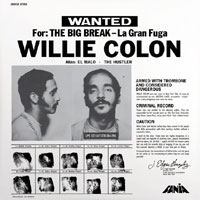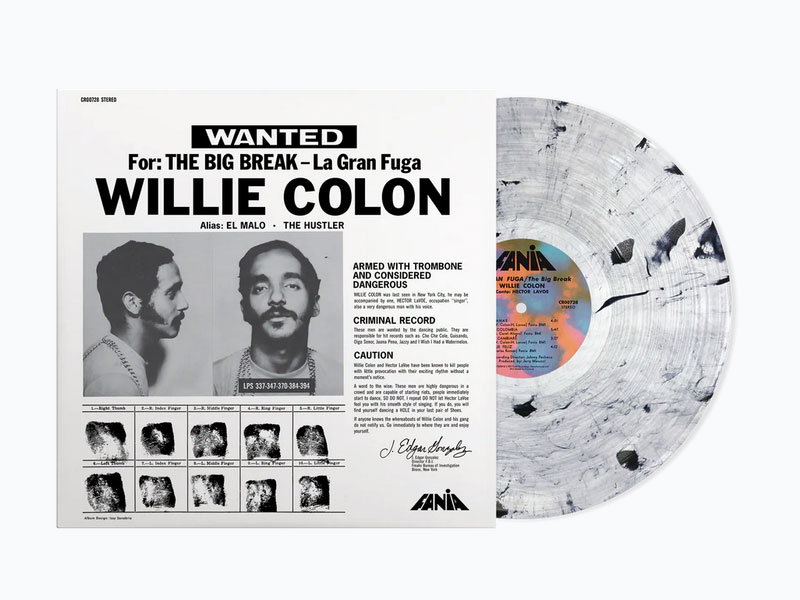Willie Colón • The Big Break - La Gran Fuga Fania/Craft Latino CR00728
Trombonist, singer, bandleader, composer, arranger, actor and producer Colón established himself early on as a leader in the salsa scene of New York. Among numerous credits (including over 60 albums), he claims to have sold well over 30 million records worldwide. As a trombonist, singer and leader he first signed to Fania at age 15 (!) and recorded his first album, El Malo, a year later, in 1966. Aided by the vocals of Héctor Lavoe, that album, released in 1967, went on to sell over 300,000 copies and helped revitalize interest in Latin music in the 1970s. With some assistance from Dominican bandleader and Fania owner Johnny Pacheco, a “bad boy” persona was created for Colón and Lavoe, which they soon adopted. This branding, which the public embraced, was based on that initial album and enhanced by their thuggish adopted persona. That guise was aided by their penchant for album covers and songs incorporating gangster themes. Indeed, a cover caption warns “Armed with trombone and considered dangerous.” Among artists whose careers Colón helped promote are Rubén Blades and Celia Cruz. Colón is still active today at age 74. The Big Break is Colón’s sixth album and continues the exciting blend of passionate dance and folk rhythms with jazz and urban street music (boogaloo) that led to his rise and continuing popularity. Half of the songs on the album were co-written by Colón and Lavoe. “Ghana’ E,” based on an African children’s song, starts the party off with a riot of sound originating from the congas, bongos, timbales, piano and twin trombones. With Lavoe’s passionate vocals weaving the story, along with accents from the ensemble and dual trombones, it becomes irresistible and infectious. The tempo is controlled, just right for relaxed dancing. The instrumental “Pa’ Colombia” follows, opening with Colón’s and Willie Campbell’s trombones, providing just the right accent for another mellow, easy-flowing dance tune. A return to a languid tempo ushers in the melancholy “No Cambiare” featuring a passionate Lavoe and more tasteful trombone fills from Colón and Campbell. The side closer, “Sigue Feliz,” follows, offering a change of pace with airy impressions of Brazil. Side two opens with “Barrunto,” which serves up a bit more bounce, followed by “Abuelita,” in which, amid a spicy rhythm, the percussion, bass and trombones (again) complement the vocals perfectly, with Colón and Campbell working together beautifully. A change of pace, tempo-wise, finds the ensemble turning up the excitement several notches in "Panameña." The short (55 seconds) album closer, “Canción Para Mi Suegra," takes us to Mexico with a humorous take on the ubiquitous polka.
This review was hard to write, because I found it hard to
sit still while taking notes. The music, with the volume raised a notch, turned my modest
listening room into a packed dance floor located in some humid club near the ocean. The
result? My feet and I were both happy while my pen and notepad sat idle. The infectious
rhythms of tumbao, montuno and clave, generated by the bass, piano, congas, bongos and
timbales, permeate the songs on this album. That, coupled with the sound of twin
trombones, driving percussion and passionate vocals, either solo or in unison, make for
lively listening. The fact that the music is captured in sharp, precise sound adds to the
listening experience. |

 ot on the heels of
ot on the heels of
